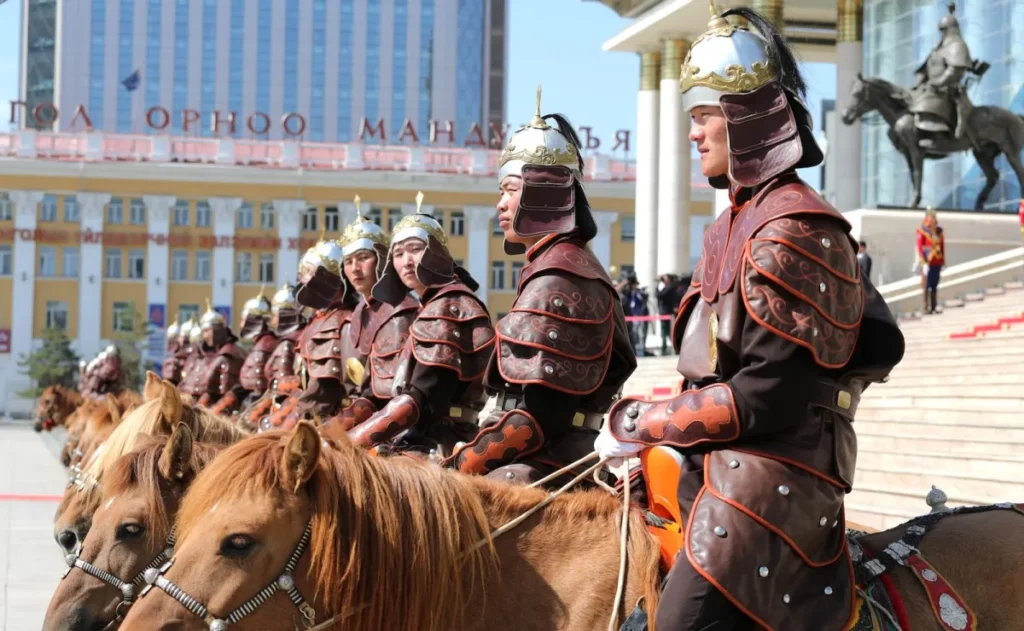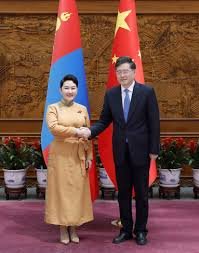China and Mongolia share a complex relationship shaped by historical, geographical, cultural, and geopolitical factors. From ancient times to the contemporary era, the dynamics between these two neighbors have been influenced by mutual cooperation, periods of conflict, and strategic interests. This comprehensive analysis will delve into the multifaceted aspects of China-Mongolia relations, tracing their evolution from antiquity to the present day.
Ancient and Medieval Interactions:
The relationship between China and Mongolia has roots in ancient history, characterized by interactions between various nomadic tribes and Chinese dynasties. The Mongol Empire, established by Genghis Khan in the 13th century, played a significant role in shaping the region’s history and its relationship with China. Under Kublai Khan, the Mongols established the Yuan Dynasty, which ruled over China for nearly a century. This period saw a fusion of Mongol and Chinese cultures, but also tensions between the ruling Mongol elite and the Han Chinese population.
The Ming and Qing Dynasties:
During the Ming Dynasty, China sought to consolidate its northern borders against Mongol incursions. The construction of the Great Wall symbolized China’s efforts to defend against nomadic invasions from the north, including those from Mongol tribes. However, the Ming government also engaged in trade and diplomacy with various Mongol khans to maintain stability along the frontier.

The Qing Dynasty, established by the Manchus, marked a significant period in China-Mongolia relations. Mongolia became part of the Qing Empire, which incorporated the region into its administrative structure as Outer Mongolia. While the Qing rulers exerted control over Mongolia, they also allowed a degree of autonomy for local Mongol princes. This period saw the gradual sinicization of Mongolian society, as well as tensions between the Qing government and Mongol leaders.
Twentieth Century:
The early twentieth century witnessed significant changes in both China and Mongolia. The fall of the Qing Dynasty and the establishment of the Republic of China led to a period of political instability and fragmentation. Meanwhile, Mongolia declared independence from the Qing Empire in 1911, establishing the Bogd Khanate of Mongolia.
However, Mongolia’s independence was short-lived, as it became a Soviet satellite state following the Russian Revolution of 1917. The Mongolian People’s Republic was established in 1924, aligning Mongolia with the Soviet Union ideologically and politically. This alignment had a profound impact on Mongolia’s relations with China, as the Soviet Union supported Mongolia’s independence and acted as a counterbalance to Chinese influence in the region.
Sino-Soviet Split and Mongolia:
The Sino-Soviet split in the 1960s further complicated China-Mongolia relations. Mongolia, as a Soviet ally, sided with the USSR in its ideological and geopolitical rivalry with China. Border skirmishes between China and the Soviet Union in the late 1960s heightened tensions in the region, leading to a deterioration of relations between China and Mongolia.
Post-Cold War Era:
The end of the Cold War brought about significant changes in the geopolitical landscape of Asia, including the normalization of China’s relations with its neighbors. Mongolia, seeking to diversify its foreign policy and reduce its dependence on Russia, sought closer ties with China. In 1994, China and Mongolia established diplomatic relations, marking a new chapter in their relationship.
Economic Cooperation:
Since the establishment of diplomatic relations, economic cooperation has become a cornerstone of China-Mongolia relations. China has emerged as Mongolia’s largest trading partner and investor, particularly in the mining sector. Mongolia possesses vast reserves of minerals such as coal, copper, and gold, which are in high demand in China’s rapidly growing economy. Chinese investment in Mongolia’s mining industry has led to economic growth but has also raised concerns about environmental sustainability and resource exploitation.

Infrastructure Development:
China has also been involved in infrastructure projects in Mongolia, including the construction of roads, railways, and energy pipelines. These projects aim to enhance connectivity between the two countries and facilitate the transportation of goods and resources. The China-Mongolia-Russia Economic Corridor, part of China’s Belt and Road Initiative (BRI), seeks to promote trade and investment along the historic Silk Road routes, further integrating Mongolia into China’s regional economic plans.
Cultural and People-to-People Exchanges:
Cultural and people-to-people exchanges have also contributed to strengthening China-Mongolia relations. Both countries have implemented various initiatives to promote cultural understanding and cooperation, including academic exchanges, language programs, and tourism promotion. The Confucius Institute, supported by the Chinese government, has established branches in Mongolia to teach the Chinese language and promote Chinese culture. Similarly, Mongolia has cultural centers in China to showcase Mongolian heritage and foster cultural exchange.
Political Relations:
Politically, China and Mongolia have maintained a generally stable relationship, characterized by mutual respect for sovereignty and territorial integrity. Both countries have emphasized the importance of maintaining peace and stability along their shared border, although occasional tensions have arisen over issues such as border demarcation and water resources.
Environmental Concerns:
Environmental issues, particularly desertification, and water scarcity, have emerged as areas of cooperation and concern for China and Mongolia. Both countries share the challenge of combating desertification and preserving fragile ecosystems in arid regions such as the Gobi Desert. Additionally, the management of transboundary rivers, such as the Selenga River, which originates in Mongolia and flows into Lake Baikal in Russia, requires coordinated efforts to ensure sustainable water use and ecosystem conservation.
Security Cooperation:
Security cooperation between China and Mongolia has expanded in recent years, particularly in the areas of counterterrorism and border security. Both countries have conducted joint military exercises and training programs to enhance their capabilities in combating transnational threats. Mongolia, as a member of the Shanghai Cooperation Organization (SCO), participates in security dialogues and cooperation mechanisms with China and other member states to address common security challenges in the region.

Challenges and Controversies:
Despite the overall positive trajectory of China-Mongolia relations, challenges and controversies persist. Some Mongolians express concerns about the growing influence of China in their country, particularly in the economic sphere. Chinese investment in Mongolia’s mining industry has raised questions about resource exploitation, environmental degradation, and the impact on local communities. Additionally, cultural and linguistic assimilation, as well as demographic shifts resulting from increased Chinese migration to Mongolia, have sparked debates about national identity and sovereignty.
On the other hand, China perceives Mongolia’s relations with the United States and other Western countries as a potential challenge to its strategic interests. Mongolia’s efforts to diversify its foreign policy and seek closer ties with countries outside of the Chinese sphere of influence have led to cautious diplomacy with Beijing.
The relationship between China and Mongolia is characterized by a complex interplay of historical legacies, geopolitical considerations, economic interests, and cultural ties. While both countries have made significant strides in enhancing bilateral cooperation in recent decades, challenges and tensions persist, reflecting the broader dynamics of power and influence in the region. As China continues to assert its position as a global economic and political power, and Mongolia seeks to balance its relations with its neighbors and other international partners, the future trajectory of China-Mongolia relations will likely be shaped by evolving regional dynamics and the pursuit of mutual interests and stability.
